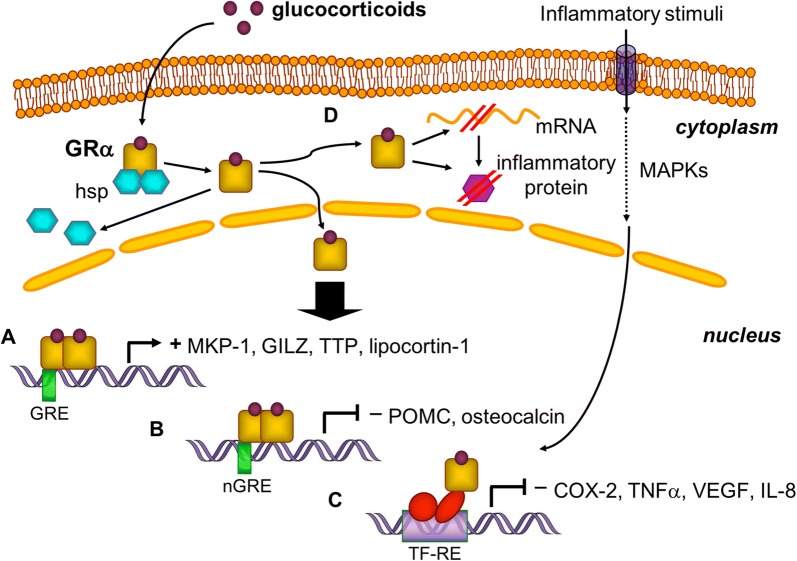Fig. 2.
Molecular mechanisms of glucocorticoid action. After crossing the cell membrane by passive diffusion, glucocorticoids bind to GRα, associated heat-shock proteins (HSP) are released, and the ligand bound receptor translocates into the nucleus. Through the activation of MAP kinase (MAPKs) intracellular cascade, inflammatory stimuli induce the production of transcription factors. A GRα dimer can bind glucocorticoid responsive elements (GRE) on the promoter region of target genes and activate anti-inflammatory gene (MKP-1, GILZ, TTP, lipocortin-1) transcription. B Binding of GRα to a negative GRE (nGRE) leads to gene (POMC, osteocalcin) repression. C Protein–protein interactions between GRα and transcription factors (AP-1, NF-κB) repress the transcription of pro-inflammatory genes (COX-2, TNF-α, VEGF, IL-8). D GRα can alter mRNA or protein stability of inflammatory mediators

